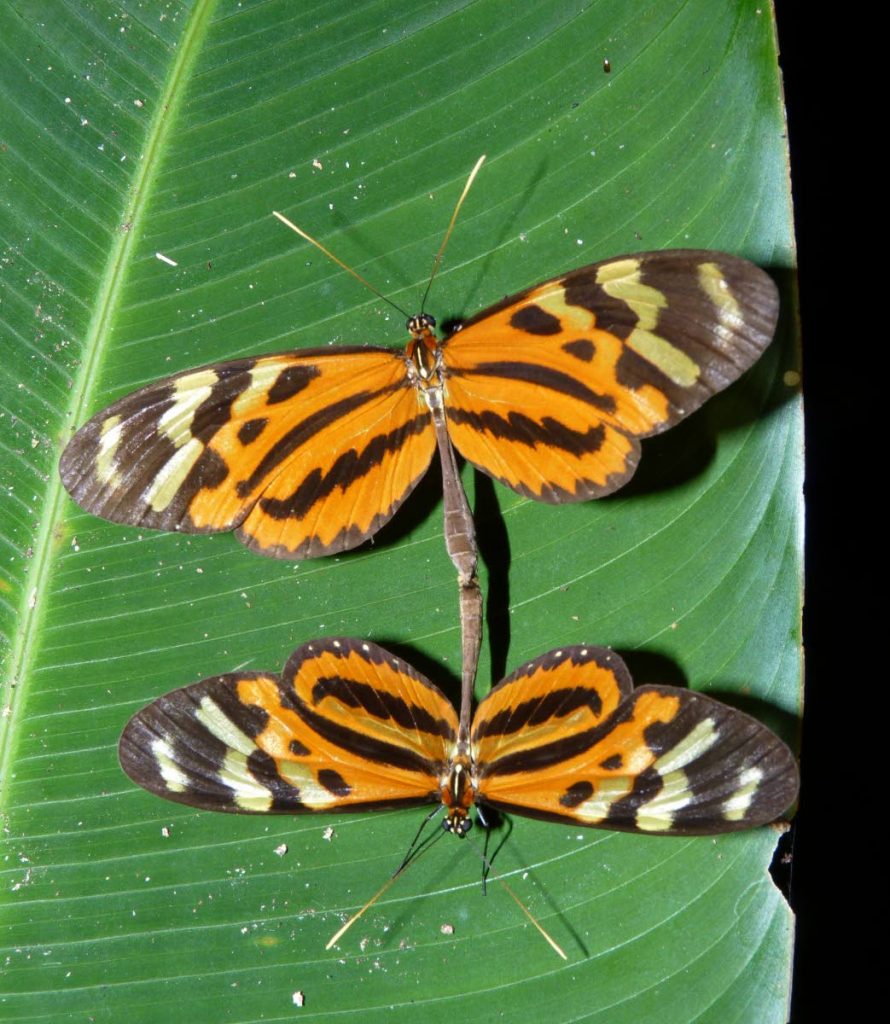The big deal about biodiversity

JO-ANNE NINA SEWLAL
This year’s Bioblitz in Icacos shed light on TT’s biodiversity. It yielded 750 species of birds, reptiles, insects, arachnids, freshwater and marine organisms, bacteria, fungi and plants in an area approximately 78km2 (a circle 10 km wide).
These annual events have been successful in gathering data on diverse groups, as biodiversity surveys tend to be very short and resource-limited thus, tending to favour the sampling of large and well-known organisms such as vertebrates and plants. Eager participants descended on Icacos from November 4 to 5 to participate in the survey.
However, “biodiversity” is a term often used in the media when it comes to any issue that is environmental in nature. But do we really understand this term and why studying biodiversity is important to our planet and to the organisms that call it home? This article focuses on biodiversity, on its importance and challenges.
Trinidad and Tobago are both blessed with a high level of biodiversity, regarded as continental islands while our closest neighbours in the Eastern Caribbean are referred to as oceanic islands. Continental islands broke away from a continental land mass, in this case South America. This separation occurred between 1,000 to 10,000 years ago and is regarded as relatively recent so that our twin islands brought with them established ecosystems and the species they contained. Whereas oceanic islands and have volcanic origins, so that every species found there was brought in by humans, blown in by storms or drifted in on mats of vegetation. An example is spiders where it is estimated that TT has 1,000 species compared to at most 80 species in an Eastern Caribbean island.
Simply put, biodiversity is “the variation of taxonomic life forms for a given biome or ecosystem”. Biodiversity provides all organisms on this planet with a variety of food. It also provides raw materials for many sectors like the construction, handicraft and pharmaceutical industries to name a few.
Biodiversity also plays a role in carrying out ecosystem services, which are regarded as “benefits provided by species and ecosystems that contribute to making human life both possible and worth living” but cannot be replicated perfectly by human activities. One main ecosystem service is helping plants reproduce. For instance, some crop species depend on insects like wasps, bees and butterflies for pollinations.
Unfortunately, the value of biodiversity is not realised or appreciated until it is gone and there are many factors that cause loss of biodiversity such as, logging, agriculture and over hunting. Sometimes the cause is not localised but more general like climate change.
Another misconception is that of “biodiversity hotspots”, which means that the area contains at least 1,500 plant species found nowhere else in the world (it has a high plant diversity) and has lost at least 70 per cent of its original habitat (it is regarded as threatened). The concept of biodiversity hotspots is quite recent, and was created to highlight areas that required preservation when it came to the species found there. Currently, biodiversity hotspots are found on six continents, excluding Antarctica. In general biodiversity hotspots are found in areas close to the Equator (like the Caribbean) and along shorelines. However, the status of these areas as biodiversity hotspots is not permanent.
One of the most obvious consequences of biodiversity loss is the loss of food sources to other animals and to humans. Sometimes it takes the loss of a few species, referred to as keystone species which could lead to the collapse of the food web in that habitat. Biodiversity loss also increases the vulnerability of the species to pests and diseases for example, by the creation of monocultures for agriculture.
Biodiversity loss not only affects the habitat as a whole but also microhabitats. Since the organisms found there have narrow ranges of tolerance for conditions such as humidity and temperature and are at greater risk for extinction. Microhabitats are occupied by tiny organisms such as insects which account for a large amount of the biodiversity present.
Finally, besides localised and generalised factors, some factors like government decision which take place great distances away have a great influence on the existence of habitats and biodiversity hotspots. This is because they produce the legislature that protects these areas from development, they also regulate the actions like hunting or the amount of resources set aside to patrol these areas to protect them against activities like arson.
Therefore it can be seen that biodiversity is not just a term to be used loosely when it comes to talking about environmental issues. Biodiversity can be used as a tool to determine the health of our ecosystems as well as ensuring their existence and that of humans on this planet.

For more information on our natural environment, contact the Trinidad and Tobago Field Naturalists’ Club at admin@ttfnc.org or visit our website at www.ttfnc.org and our Facebook or YouTube pages.


Comments
"The big deal about biodiversity"